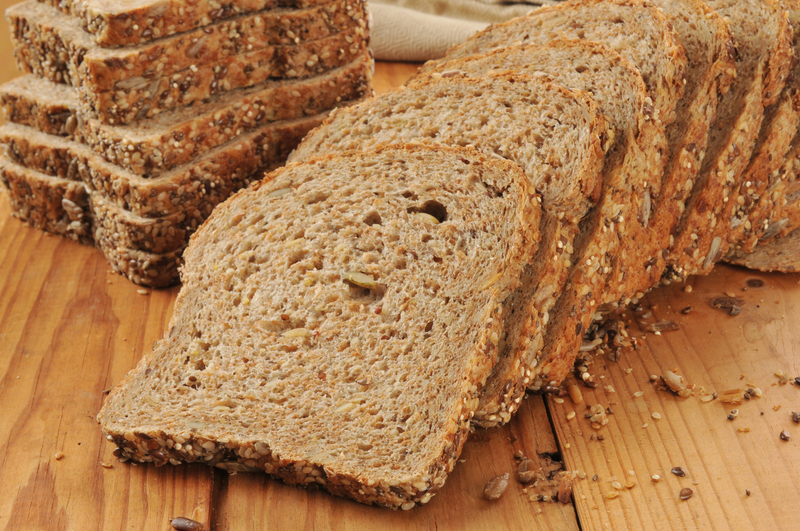Master the Art of Removing Mould from Window Sills
Posted on 22/06/2025
Master the Art of Removing Mould from Window Sills: Your Complete Guide
Struggling with unsightly black patches on your window ledges? Mould on window sills is a common issue--but it's one you can tackle effectively with the right techniques and tips. This comprehensive guide will help you remove mould from window sills safely, efficiently, and keep it from coming back.

Understanding Mould Growth on Window Sills
Mould thrives in damp, warm environments. Window sills, particularly those made of wood or areas with poor ventilation, become prime spots for fungal growth. If left untreated, window sill mould not only damages your property but also poses health risks, especially for those with allergies or respiratory issues.
What Causes Mould to Appear on Window Sills?
- Condensation: Windows often attract condensation, especially during colder months when the temperature differential between the inside and outside of your home is significant.
- Poor Ventilation: Lack of adequate airflow allows moisture to linger, creating the perfect breeding ground for mould.
- Leaking Windows: Cracks or gaps can allow water intrusion, further exacerbating the moisture problem.
- Humidity: Homes with high humidity levels are more susceptible to persistent mould problems.
Why Is It Important to Remove Mould from Window Sills Promptly?
Mould removal from window sills is critical for several reasons:
- Health Risks: Mould spores can trigger allergies, asthma attacks, and other respiratory issues.
- Structural Damage: Mould can weaken wooden window sills, leading to costly repairs.
- Stains and Odours: Mould leaves persistent stains and musty odours, impacting your home's comfort and value.
Essential Tools and Supplies for Mould Removal
Before starting any mould cleaning process, gather the right supplies:
- Protective gloves
- Face mask (to avoid inhaling spores)
- Goggles
- Old clothes or a disposable apron
- Scrubbing brush or old toothbrush
- Spray bottle
- Microfiber cloths or sponges
- A vacuum with a HEPA filter (optional, for cleaning up loose spores before washing)
- Mild detergent, white vinegar, or specialised mould cleaner
- Bicarbonate of soda (baking soda)
- Clean water
Optional Supplies for Severe Cases
- Hydrogen peroxide (for stubborn stains)
- Commercial anti-mould treatments
- Disposable bags (for safely discarding contaminated materials)
Step-By-Step Guide: How to Remove Mould from Window Sills
Step 1: Prioritise Safety
Wear protective gear--including gloves, a mask, and goggles--to minimise exposure to spores. Open windows to ensure good ventilation while you work.
Step 2: Dry the Affected Area
Using a dry microfiber cloth, gently blot away any visible condensation or moisture. A dry surface prevents the spread of mould spores during the next steps.
Step 3: Remove Loose Mould Spores
If possible, use a vacuum cleaner with a HEPA filter to carefully remove loose spores. Dispose of the vacuum bag or empty the canister outside immediately after use.
Step 4: Prepare Your Cleaning Solution
- White Vinegar Solution: Mix equal parts white vinegar and water in a spray bottle--vinegar is a natural disinfectant and effective against many types of mould.
- Baking Soda Solution: Dissolve one tablespoon of baking soda in a spray bottle filled with water. This acts as both a cleaning and deodorising agent.
- Mild Detergent Solution: Mix water with a small amount of dish soap for gentle cleaning, good for painted or sensitive surfaces.
For stubborn black mould, consider using a commercial anti-fungal cleaner or a 3% hydrogen peroxide solution. Always test solutions on a small hidden area first.
Step 5: Apply the Cleaning Solution
Generously spray the mould-affected window sills with your chosen cleaning solution. Let it sit for 10-15 minutes--this makes it easier to remove black mould from window sills.
Step 6: Scrub the Mould Off Window Sills
Using your scrubbing brush, toothbrush, or sponge, firmly scrub the window sill to remove all visible mould. Pay extra attention to any crevices, joints, or textured surfaces where mould can hide.
Step 7: Wipe Clean and Dry Thoroughly
Wipe away all residue with a clean, damp cloth. Rinse as necessary, then thoroughly dry the window sill to prevent rapid mould regrowth.
Step 8: Dispose of Cleaning Materials Safely
Place any used cloths, gloves, and contaminated materials in a sealed disposable bag. Wash hands thoroughly after cleaning.
How to Remove Mould from Wooden Window Sills
- Be Gentle: Wood can be porous and easily damaged. Avoid excessive water, and stick to gentle scrubbing with mild solutions.
- Use Vinegar or Hydrogen Peroxide: Both are effective yet gentle mould removers for wood. Avoid bleach, as it can harm the wood and discolour it.
- Dry Completely: After cleaning, be sure to dry the area with a clean, absorbent cloth. For severe cases, use a hairdryer on a cool setting.
Note: Repeated or severe growth may require lightly sanding and refinishing the wooden window sill--always inspect thoroughly after cleaning.
How to Remove Mould from UPVC Window Sills
- UPVC is easier to clean: It is non-porous, so mould typically remains on the surface.
- Vinegar, Baking Soda, or Commercial Cleaners: Any of these can be applied safely to UPVC without causing damage.
- Use a Soft Brush or Sponge: Avoid abrasive scrubbers that can scratch the plastic.
- Buff Dry: Wipe with a dry microfiber cloth to prevent streaks or water spots.
Natural Remedies for Mould Removal
If you wish to avoid harsh chemicals, these natural methods can effectively clean mould off window sills:
- White Vinegar: Naturally kills many types of mould. Spray, leave, and wipe clean.
- Baking Soda Paste: Mix with a little water and scrub onto stubborn patches.
- Lemon Juice: Has natural anti-fungal properties and leaves a fresh scent.
- Tea Tree Oil Solution: A powerful mould-killer. Mix a teaspoon in a cup of water and spray onto the affected area.
*Tip: Always patch-test natural remedies on a hidden area to make sure they don't stain or damage your window sill material.*
Preventing Mould on Window Sills: Tips for Lasting Results
The best way to master the art of removing mould from window sills is to stop it from appearing in the first place. Here are some proven strategies:
- Improve Ventilation: Open windows daily or use extractor fans, especially in humid areas like kitchens and bathrooms.
- Use a Dehumidifier: Reduce indoor humidity to below 60%--mould struggles to grow in drier environments.
- Insulate Windows: Shift to double-glazed windows or use insulating film to minimise condensation build-up.
- Fix Leaks Immediately: Seal any window gaps, repair water damage quickly, and ensure water drains away from sills.
- Regular Cleaning: Wipe window sills and frames weekly to prevent dust and moisture build-up.
- Monitor Indoor Plants: Over-watering plants near windows can increase local humidity levels.
When to Call in the Professionals
Sometimes, DIY mould removal from window sills isn't enough. Seek professional help if:
- The area is larger than 1 square meter: This can indicate a systemic problem.
- The mould keeps reappearing: Persistent mould may signal underlying structural issues.
- You have health concerns: If you or a household member is sensitive, avoid direct contact with mould.
Professional mould remediation teams can assess, treat, and help prevent future outbreaks, often using specialised equipment and techniques.

Frequently Asked Questions About Mould Removal from Window Sills
Can I Use Bleach to Remove Mould?
While bleach kills surface mould, it's less effective at tackling spores that have penetrated porous materials like wood. Instead, use vinegar, hydrogen peroxide, or dedicated anti-mould products.
Is Mould on Window Sills Dangerous?
Yes, exposure to mould can trigger allergies, asthma, and other respiratory illnesses--especially in children, the elderly, and those with compromised immune systems.
How Often Should I Clean My Window Sills to Prevent Mould?
Wipe window sills weekly and monitor for signs of condensation. This quick routine can help prevent build-up and recurrence of black mould on window sills.
What if Mould Returns Quickly?
Persistent mould is usually due to ongoing moisture problems. Address the root causes--improve ventilation, fix leaks, and control humidity--to achieve lasting results.
Conclusion: Take Control with Expert Mould Removal for Window Sills
With the methods outlined above, you can master the art of removing mould from window sills. A little prevention goes a long way: keep areas dry and well-ventilated, fix moisture problems promptly, and clean regularly. With these steps, your home can remain free from mould's unsightly and unhealthy grip.
Remember: consistent care and timely action are the keys to a mould-free, healthy home environment.
- Gather the right tools and protect yourself.
- Use safe, effective mould removal methods.
- Address underlying moisture issues.
- Maintain regular cleaning routines.
Don't let mould take over--take action today for cleaner, fresher window sills and a healthier home!




